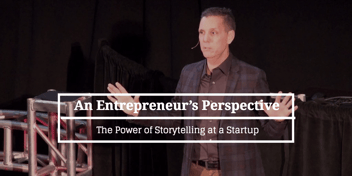
We see the term “big data” every day, and hear it talked about as if it’s a new trend that’s in huge growth mode. While the huge growth aspect of big data is true, the idea that it’s “new” is a myth. The truth is big data has been around for years.
What’s new, however, is that you no longer have to be a data scientist whose main job it is to review and analyze all the information; there are now analytics tools to help us understand what all this data means – which is of great benefit to the front-line employees who need access to the information and insights to effectively do their jobs. Unfortunately, many companies are still not giving their workforce access to the analytics, which keeps them in the dark when it comes to how they can better perform.
Part of the challenge is that too much data can cause information overload for employees, and they may start to tune out the information altogether. Also, most of the time, the data we need to make important, strategic decisions comes from multiple sources; so the challenge then becomes how to determine what data is most relevant for the task at hand.
For instance, if you’re a salesperson trying to gain insight into a prospect before you pick up the phone, you need to know where to get the most relevant and accurate information, and if the data source is credible. Most likely a LinkedIn profile is a good place to start, but if you just do a broad web search, you may find sources that don’t accurately represent the individual you’re contacting.
One aspect of big data that can help reduce information overload is to look to tools that identify trends over time, and arm you with important data in the moment that you need it. HubSpot is a great example. Say you want to understand the reach and influence of your company’s blog, to present a compelling picture to your executive team. HubSpot will look at recent posts, keyword utilization, traffic and click-throughs, etc. – and give you a full view of your blog’s impact over time to show you in any given moment the effect the blog is having on readership and outbound marketing efforts.
Improve Onboarding and Communications With Data Driven Insights.
Ving is another example of a tool that looks at the data and provides analytics showing trends over time. With this platform, people gain an understanding of best practices for communications, information sharing and engagement based on what works over a period of time. There are several compelling use cases that demonstrate its value; a sales person in the trenches who wants to know how best to communicate with a buyer network, or a manufacturing shop foreman who needs to communicate compliance and safety to hundreds of employees in multiple locations, or an HR executive who needs to ensure new employees have been properly on-boarded and trained on systems and processes. By showing who engages with what content at what time, and allowing them to offer feedback (through surveys and polls) – Ving helps individuals and companies understand where there is an engagement gap, how big it is, and how it can be resolved.
It’s important to remember that these types of data analytics tools work over time. If I send a Ving to a group of users today, I can go into my dashboard and see how it has performed over a period of days or even weeks – and help me understand what elements I can change to have greater impact. For example, is training on a new expense reporting system better offered through a written document, or video – or perhaps both? By seeing who clicked on which asset – and when – I can make better informed decisions about how best to engage with different user groups.
So what’s the truth about big data? It should help you know more – and require you to do less. The trend of getting access to data analytics in the hands of frontline employees, and also integrating with other systems and tools in an organization, will give your teams a more holistic view, and help them be more efficient and more effective. And the good news is the tools are out there to make this happen – you just have to use them.
For more information on Ving, visit www.vingapp.com.






Leave a Comment